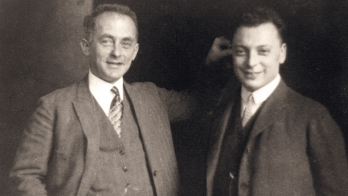by Eugenie Samuel Reich, Palgrave Macmillan. Hardback ISBN 9780230224674, £15.99 ($26.95). Paperback ISBN 9780230623842, £12.99 ($17).

This book devotes 266 dense pages – 20 of them listing hundreds of notes – to a case of scientific misconduct staged at Bell Labs between 2000 and 2002, with Jan Hendrik Schön as the central figure. The plot follows the path leading up to the discovery that Schön’s breakthroughs on “molecular electronics” (which included lasers and superconductors made of organic plastics) were fraudulent.
Reich makes a good case in defending the argument that the economic situation at Bell Labs and the need to justify keeping a strong basic-research department in the company made the ground fertile for an ambitious young person to flourish and enchant (fool) the senior people. It is actually quite amazing to see that the co-authors of Schön’s papers knew so little about important points of the reported work, and that the fabrication of data was not uncovered earlier than it was, given the frequent questions being asked by many Bell people, including close collaborators, managers and other staff. It helped that many of his papers presented “measurements” that matched predictions. He seemed to write his papers backwards: first the conclusions, then the “data” that supported them, often generated from equations rather than from the apparatus.
In hindsight, it looks preposterous to think that Schön could possibly write more than 20 groundbreaking publications in such a short time period, including seven papers in a single month, November 2001. This, alone, should have alerted people to the possibility that the reported results may have been fabricated. The journals Nature and Science emerge from this book as not being very careful about reviewing the articles that they publish, placing the emphasis on selecting papers that will make the headlines (the “breakthrough of the year”) rather than in ensuring that they provide enough technical details to allow for a good scrutiny of their plausibility and for an efficient verification by other labs. Many people wasted time and money trying to replicate the fabricated results. Schön’s publication “success” surely benefited from having signed the papers with a senior co-author, a well known expert who gave further credibility to the fraudulent results by giving a multitude of seminars on the subject, to the point of being awarded, and accepting, prizes for the “discoveries”.
This is an interesting book and Reich clearly convinces the reader that, despite our natural tendency to think that scientists can be trusted (honest people, who might make mistakes), some of them deliberately fudge the measurements to fit with preconceived ideas, old or new. The scientific method needs to be learned, sometimes through years of careful training, modulated by sceptical professors (who can notice patterns that look “too good to be true”). However, I would gladly have exchanged many of the specific details about this single case for more information about other cases, together with a global discussion of the factors that lead to such frauds. Are they caused by young people with inadequate training and supervision? Or by ambitious senior people desperately looking for an important prize and pushing their young partners to search for anomalies and “new physics”, neglecting the importance of time-consuming validation checks? Are there branches of science where they are more frequent?
Reich was very meticulous and gives all sorts of details that interrupt the fluidity of the reading. She could have redesigned the narrative, avoiding some repetition, placed the introductory text of chapter 9 (!) at the start of the book, and removed a few of the lines and paragraphs containing little information. Without an introductory chapter preceding the main plot and giving a broad overview of this field, most readers will lack the minimum background knowledge needed to appreciate the reported saga. As a side remark, it is curious to learn that Nobel laureate Bob Laughlin repeatedly claimed that Schön’s results had to be fraudulent but his opinion “didn’t count because he was known to be too sceptical”.







